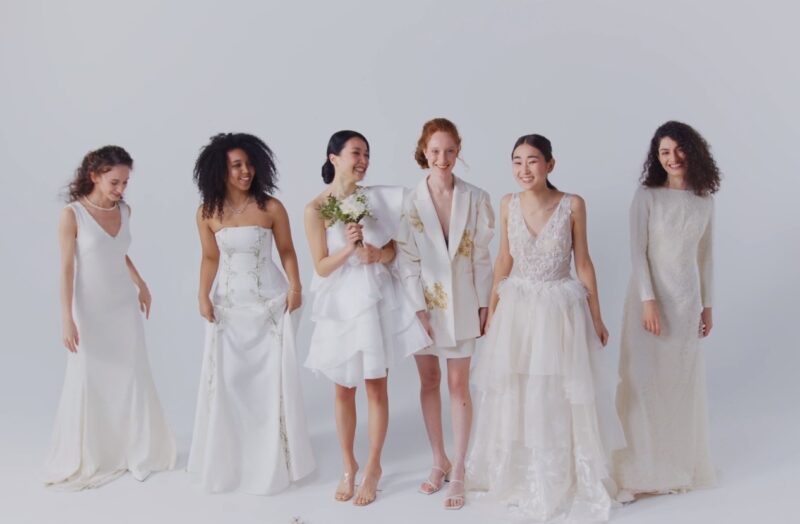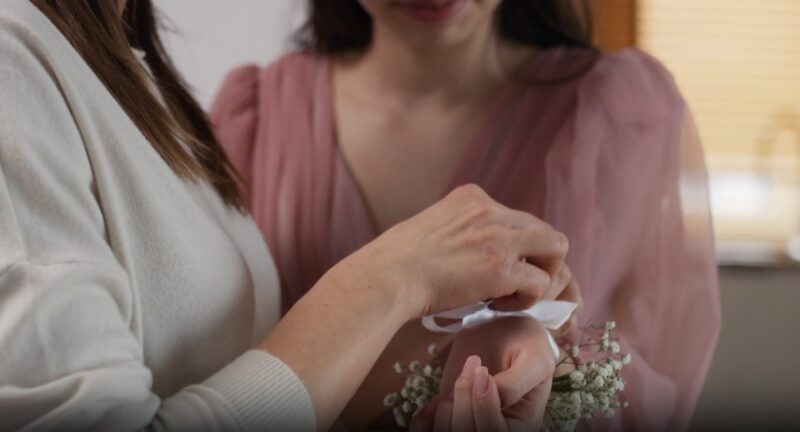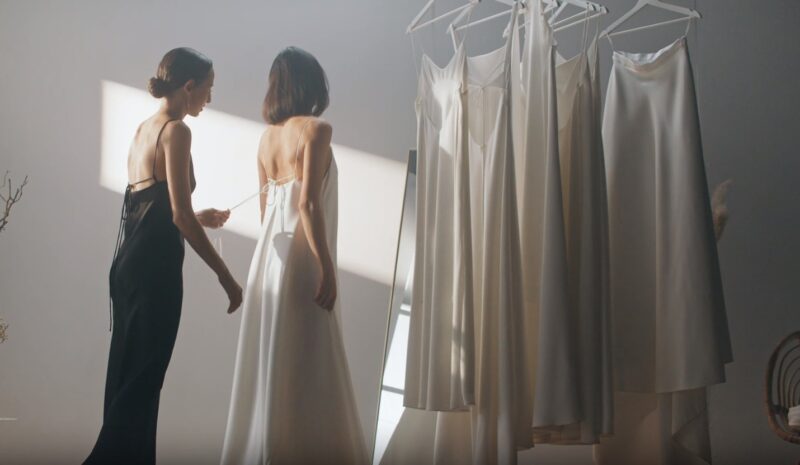Chosen individuals, often close friends or family members of the bride, stand by her side during the nuptial ceremony and fulfill various supportive duties. While traditionally referred to as bridesmaids, this role has evolved over time, accommodating a range of titles and responsibilities.
It’s important to note that there is no strict rule governing the number of attendants a bride can select. The decision is deeply personal and can be influenced by a multitude of factors, including cultural norms, the scale of the event, and individual preferences.
The purpose of this insight of ours is to explore the various elements that can impact this decision. From traditional customs to modern trends, the considerations are as diverse as they are significant.
Tips for Deciding on the Number of Bridesmaids

Since the number of bridesmaids is not predetermined, it is up to the couple to make a decision. When it comes to deciding the actual number, several factors can guide the decision-making process.
| Factor | Description | Considerations |
|---|---|---|
| Personal Connections | Evaluate the depth and significance of relationships. | Include those who have played a meaningful role in your life. Consider the dynamics between potential attendants. |
| Event Scale | Consider the size and formality of the celebration. | A larger event may accommodate more attendants. Intimate celebrations might suit a smaller group. |
| Cultural Traditions | Reflect on cultural and family traditions. | Honor cultural practices while balancing personal preferences. Consider hybrid approaches for mixed heritage. |
| Budget Constraints | Be mindful of financial limitations. | Assess the cost implications of a larger group. Plan for attire, gifts, and other expenses. |
| Logistical Feasibility | Think about the practical aspects of coordination. | Consider the ease of managing the group. Plan for accommodations and transportation. |
| Roles and Responsibilities | Define the roles you expect attendants to play. | Ensure each attendant can contribute meaningfully. Balance ceremonial roles with support duties. |
| Modern Trends | Stay open to contemporary practices. | Consider non-traditional roles and compositions. Embrace simplicity or eclectic mixes as desired. |
Pros and Cons of Having More or Fewer Bridal Attendants

Choosing the number of bridal attendants involves weighing the advantages and disadvantages of both larger and smaller groups. This consideration is crucial in achieving a balance that suits the couple’s vision and circumstances.
| Advantages | Disadvantages | |
|---|---|---|
| Larger Bridal Party |
|
|
| Smaller Bridal Party |
|
|
Cultural and Traditional Influences

Every culture brings its unique touch to nuptial celebrations, profoundly impacting various aspects, including the composition of the bridal party.
Globally, traditions vary significantly, reflecting the rich diversity of societal norms and values. In some cultures, having a large group of attendants is seen as a symbol of status and prosperity, while in others, the focus is on an intimate gathering of only the closest companions.
- Eastern Traditions: In many Eastern cultures, the bridal party often includes siblings and cousins, reflecting the importance of familial bonds. For instance, in Indian weddings, the concept of bridesmaids is relatively modern, but the inclusion of sisters and cousins in ceremonial roles is a long-standing tradition.
- Western Practices: Western traditions typically involve a smaller group of attendants, chosen from close friends and family. The roles and responsibilities assigned to these individuals are also more defined, often involving pre-wedding activities like bridal showers and hen parties.
- African Customs: In various African cultures, the bridal party can include a larger group, symbolizing community and extended family support. These attendants often play a role in traditional ceremonies, adding to the communal aspect of the celebration.
- Hybrid Celebrations: In today’s globalized world, many couples opt for a blend of cultural traditions, which can influence the size and composition of their bridal party. A wedding that combines different cultural elements might see a varied and eclectic group of attendants, reflecting the couple’s diverse heritage.
Understanding these cultural nuances is crucial for anyone planning their ceremony. It’s a delicate balance between honoring traditional customs and embracing personal preferences. This blend of respect for heritage and individuality is what makes each celebration unique and memorable.
Size and Scale of the Ceremony

The magnitude and formality of the matrimonial event play a significant role in determining the number of bridal attendants. The scale of the ceremony, whether it’s a grand affair or a more intimate gathering, often dictates the size and composition of the bridal party.
- Intimate Ceremonies: For smaller, more personal celebrations, a limited number of attendants may be more appropriate. In these settings, the focus is often on having a few, very close individuals participate in the ceremony, creating a sense of closeness and intimacy.
- Medium-Sized Events: In medium-sized ceremonies, there is more flexibility in the number of attendants. This scale allows for a balanced approach, accommodating a moderate group without overwhelming the event’s intimacy.
- Large-Scale Celebrations: In grander ceremonies, it’s not uncommon to see a larger group of attendants. Here, the bridal party can include a broader circle of friends and family, reflecting the event’s expansive nature.
The choice of venue can also influence this decision. A larger venue might accommodate a bigger bridal party, whereas a smaller, more intimate space might necessitate a reduced number of attendees.
Additionally, the ceremony’s formality can impact this choice – more formal events might call for a larger group to fulfill various ceremonial roles, whereas casual celebrations might lean towards a smaller, more relaxed bridal party.
Personal Preferences and Relationships

At the heart of the decision-making process are the bride’s personal preferences and her relationships with potential attendants. This choice is deeply personal and reflective of the individual’s life and connections.
Choosing someone to be a part of this special day is a mark of honor and affection. It’s often about selecting those who have played a significant role in the bride’s life. The decision can sometimes be a balancing act, especially when trying to include important individuals without offending others.
It’s about weighing personal desires against social expectations and familial obligations. Modern bridal parties often reflect a diverse range of friendships and family relationships. Including individuals from different parts of the bride’s life can create a unique and inclusive atmosphere.
It’s essential for the bride to consider her comfort level and the dynamics between potential attendants. The goal is to create a supportive and harmonious group that will enhance the joy of the occasion.
Logistics and Budget Considerations

When considering the size of the bridal party, practical aspects such as logistics and budget play a crucial role. These considerations often require a balance between desire and feasibility. Coordination Efforts:
- Larger groups require more coordination and management.
- Scheduling and organizing activities can be more challenging with more attendants.
Attire and Accessories:
- The cost of dresses, accessories, and grooming for each attendant can add up quickly.
- Choosing attire that suits everyone’s budget and style preferences can be a complex task.
Accommodations and Transportation:
- Arranging travel and accommodations for a larger group can be both expensive and logistically challenging.
- Ensuring everyone’s comfort and timely arrival requires careful planning.
Gifts and Tokens of Appreciation:
- The tradition of giving gifts to attendants can become a significant expense with a larger bridal party.
- Finding thoughtful, budget-friendly gifts requires creativity and planning.
Roles and Responsibilities of Bridal Attendants
The roles and responsibilities assigned to bridal attendants are diverse and can influence the decision regarding their number. These roles extend beyond mere ceremonial participation, encompassing various supportive tasks and activities.
| Role | Description |
|---|---|
| Pre-Wedding Support | Attendants often play a key role in planning and organizing pre-wedding events such as bridal showers and bachelorette parties. Their involvement in these activities can vary based on the number and individual capabilities. |
| Ceremonial Roles | During the ceremony, attendants may have specific roles, such as bouquet holding, dress adjusting, and participating in traditional rituals. A larger group can add to the ceremonial grandeur, while a smaller group might lend a more intimate feel. |
| Emotional Support | Perhaps the most crucial role of attendants is providing emotional support to the bride. This includes being a sounding board for ideas, offering comfort during stressful moments, and being a joyful companion in the celebration. |
Considering the range and intensity of these roles can help in deciding the optimal number of attendants. It’s about finding a balance between having enough support and ensuring that each attendant can meaningfully contribute to the occasion.
Trends and Modern Practices

Contemporary trends and practices in matrimonial celebrations have brought about significant changes in the traditional bridal party structure. These modern approaches offer flexibility and creativity in choosing attendants.
There is a growing trend towards including mixed-gender bridal parties, reflecting the diversity of modern relationships. This approach breaks away from traditional gender roles, allowing friends of any gender to participate. Modern celebrations often see a blend of friends, family, and even pets in bridal parties.
This eclectic mix reflects the personal and unique nature of contemporary relationships. Some couples are opting for more minimalistic approaches, choosing to have no bridal party or just a maid of honor or best man. This trend reflects a shift towards simplicity and a focus on the couple.
These modern trends highlight the evolving nature of matrimonial celebrations, emphasizing personalization and inclusivity. They offer a canvas for couples to paint their unique vision of their special day.
FAQs
Is it okay to have more bridesmaids than groomsmen?
Yes, it’s fine to have an uneven number of bridesmaids and groomsmen.
Should my bridesmaids all wear the same dress?
They can, but some brides opt for variations in style or color to suit individual tastes.
Can I change my mind about the number of bridesmaids?
It’s best to be sure before asking, as changing your mind can be sensitive.
What are the duties of a bridesmaid?
Duties often include helping with wedding planning, attending pre-wedding events, and supporting you on your wedding day.
Closing Thoughts
The decision regarding the number of bridal guests is multifaceted, encompassing cultural, personal, logistical, and financial aspects. It’s a choice that should be made with careful consideration of various factors, from personal relationships and cultural traditions to the practicalities of event management and budget constraints.
Ultimately, the key is to strike a balance that reflects the couple’s values, desires, and the nature of their celebration.
